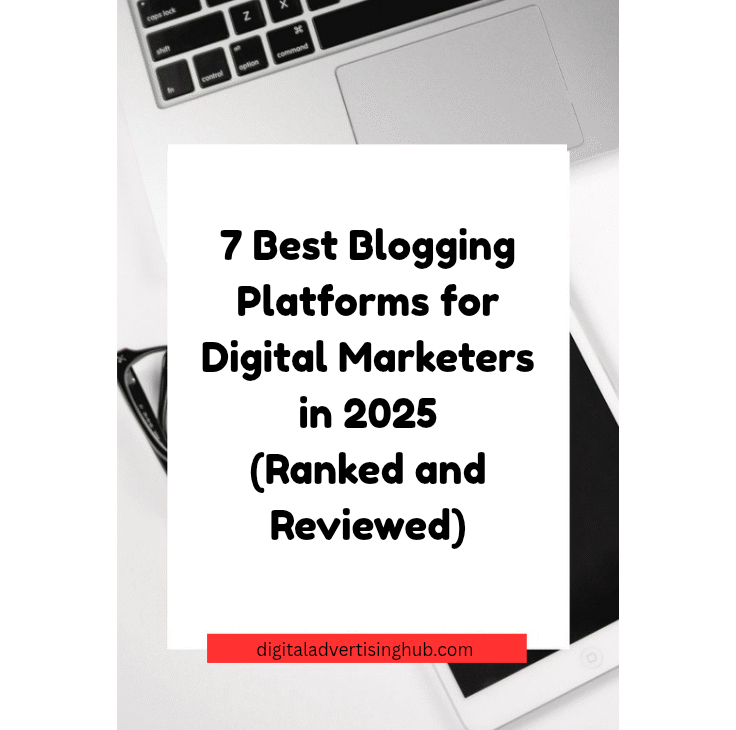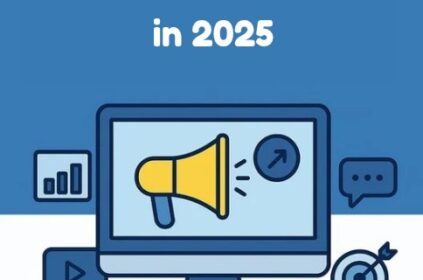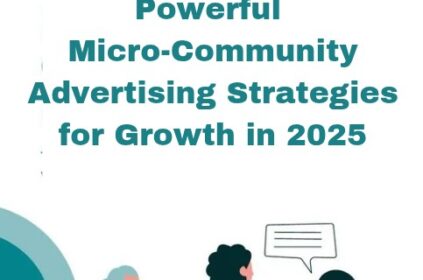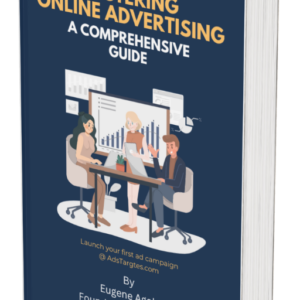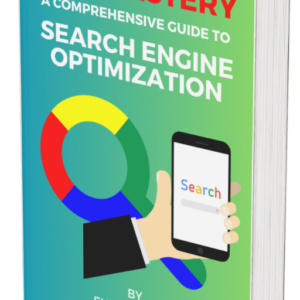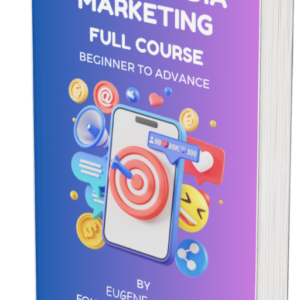Blog-led funnels still outperform most social-only tactics because they capture search demand, grow owned audiences, and compound over time.
As budgets tighten, teams weigh every subscription fee and development hour, so choosing wisely matters more than ever.
And, with that in mind, we review the 7 best options and show how top blogging platforms for digital marketers in 2025 support revenue, reach, and reader experience without dead-end rebuilds later.
How We Compared the Platforms
To keep the scorecard practical, each contender was measured against five factors:
#1. Time-to-launch: theme availability, onboarding flow, and migration tools.
#2. SEO depth: native schema controls, speed optimisation, and plugin ecosystem.
#3. Monetisation flexibility: ad integrations, membership paywalls, and affiliate widgets.
#4. Total cost of ownership: hosting, upgrades, and optional premium add-ons.
#5. Long-term scalability: security track record, code extensibility, and community support.
Every criterion maps directly to day-to-day challenges digital teams face on top blogging platforms for digital marketers in 2025, keeping the review grounded in outcomes rather than glossy feature checklists.
#1. WordPress.org
With more than 61 percent of the CMS market, WordPress scales effortlessly from a single-author blog to an enterprise commerce hub without forcing painful migrations.
The open-source core receives frequent security patches, and 70,000-plus plugins automate everything from AMP generation to GDPR compliance.
A recent core upgrade added full-site editing, so marketers can drag-rearrange headers, footers, and sidebars instead of editing PHP templates.
Advanced Custom Fields, REST API endpoints, and native pattern libraries also make WordPress a strong candidate for headless builds that feed mobile apps and Jamstack front-ends from the same database—no double publishing.
Why Marketers Pick it in 2025
#1. Core code is free; managed hosting plans start below US $10 per month.
#2. Yoast, Rank Math, and All-in-One SEO give granular control over sitemaps, schema, and breadcrumbs.
#3. WooCommerce turns content traffic into product sales without leaving the dashboard.
WordPress benefits further from a global community of designers, devs, and educators who publish free docs, themes, and code snippets every day.
That ecosystem shortens problem-solving cycles and keeps total cost of ownership predictable.
Because of that breadth, many still regard WordPress as the backbone of top blogging platforms for digital marketers in 2025, especially teams that insist on full data ownership, limitless customisation, and future-proof scalability.
#2. Ghost
Ghost positions itself as a minimalist publishing engine that bakes in email newsletters, paid memberships, and analytics from the outset.
Its modern Node.js foundation delivers fast page loads—an indirect but vital SEO win—and the uncluttered admin dashboard keeps non-technical contributors focused on writing rather than wrestling with menu mazes.
The 6.0 release introduced native A/B testing for subject lines and post titles, plus automatic Open Graph image generation, so social shares stay on-brand without manual uploads.
A flexible routing file lets editors map URLs any way they like, matching complex content hierarchies without plugins.
Stand-Out Traits
#1. Native Leaky-Paywall-style subscriptions—no third-party scripts required.
#2. Markdown-first editor keeps formatting consistent across web and email.
#3. Transparent pricing: self-host free or choose Ghost(Pro) from US $9 per month.
Stripe integration handles payments in 135 currencies, and Ghost only takes a flat platform fee—no escalating revenue share.
Revenue-splitting headaches vanish, a compelling hook as top blogging platforms for digital marketers in 2025 shift toward direct-to-audience monetisation.
For brands that value speed, clean code, and built-in recurring revenue, Ghost remains a lean yet powerful alternative to heavier CMS options.
#3. Wix
Recent performance upgrades and an AI-assisted site builder help Wix retain “best website builder” status in multiple industry reviews.
Users answer a few questions, choose from recommended layouts, and the ADI (Artificial Design Intelligence) engine assembles a mobile-ready blog in minutes—no code required.
Its free tier lets newcomers test ideas, while premium bundles add custom domains, analytics, and ad vouchers for quick traffic experiments.
An updated Media Manager optimises every image on upload, improving Core Web Vitals without plugins.
Built-in SSL, automatic backups, and ISO-certified data centres ease compliance conversations with stakeholders.
Marketing-Ready Advantages
#1. Built-in performance optimisation; no caching plugin hunt.
#2. Visual drag-and-drop tweaks launch faster A/B tests for CTAs.
#3. App Market integrations cover ecommerce, pop-ups, and CRM sync.
Wix now supports structured-data widgets for product, article, and FAQ schema, helping posts surface in rich snippets.
And, with that, it earns a solid place among top blogging platforms for digital marketers in 2025 for creators who prioritise launch speed and effortless maintenance over deep code access.
#4. Medium
Medium strips away design complexity and doubles down on distribution. Built-in network effects push quality posts to thematic homepages, newsletters, and the mobile app feed, exposing writers to tens of thousands of potential readers per article.
The Partner Programme compensates authors based on member reading time, creating a direct link between engagement and earnings.
Latest updates include “Series” for multi-part content, improved custom domains for publications, and a redesigned stats dashboard that tracks member-vs-non-member traffic separately.
Accessibility also got a boost: automatic alt-text prompts and colour-contrast checks now run before publication.
Why It Still Matters
#1. Built-in audience discovery through tags and topic surfacing.
#2. No setup time—publish immediately from any browser.
#3. Clean typography and accessibility baked in.
Medium integrates with Zapier and native RSS to funnel content into social queues or email tools, extending reach beyond the platform.
While it rarely serves as the final destination for brands demanding pixel-perfect funnels, it excels as a syndication outpost or experimentation ground within the wider lineup of top blogging platforms for digital marketers in 2025, providing quick feedback loops before heavier investments elsewhere.
#5. Substack
Substack merges blogging with newsletters, letting authors ship posts straight to inboxes and lock premium issues behind recurring payments.
Paid subscribers surpassed five million in early 2025, confirming the model’s appeal far beyond niche writers or tech pundits. The dashboard stays distraction-free: you write, set a paywall if needed, and hit publish.
Readers can comment on posts, join real-time chats, and share public or private notes—features that keep communities engaged inside the platform instead of scattered across social feeds.
Key Features
#1. One-click podcast hosting adds an audio track to the content calendar; episode files sit alongside written posts without extra hosting fees.
#2. Stripe integration handles billing in 135 currencies while the platform keeps a flat 10 percent fee; no hidden payment gateways to configure.
#3. Community tools like chats and threads strengthen retention, encouraging subscribers to treat the channel as a hub rather than a one-way newsletter.
For creators who link “best blogging platform to make money” with subscription revenue, Substack stands out in any short list of top blogging platforms for digital marketers in 2025.
Direct reader payments, minimal admin overhead, and cross-format publishing (text, audio, video snippets) let small teams generate recurring income without bolt-on plugins or custom code.
#6. HubSpot CMS
HubSpot weaves a full CMS into its well-known marketing hub, so SEO tips, CRM data, and email automation live one click away from the page editor.
Marketers see keyword suggestions, broken link flags, and on-page SEO scores as they write, shrinking feedback loops.
The drag-and-drop design tool respects brand guidelines through global style settings; meanwhile, adaptive page delivery serves personalized modules based on a visitor’s lifecycle stage.
Revenue-Oriented Highlights
#1. CRM data drives dynamic content, so first-time visitors see awareness assets while returning leads get mid-funnel offers.
#2. Automatic AMP and server-side rendering sharpen Core Web Vitals, improving search visibility without manual optimisation.
#3. Multi-language content tools localise posts, supporting markets like India or Nigeria from a single codebase instead of duplicate blogs.
Pricing starts at US $25 per month for the entry tier and scales with contacts rather than traffic, making forecasting transparent.
Because campaigns, analytics, chatbots, and sales pipelines sit under one login, HubSpot belongs in the line-up of top blogging platforms for digital marketers in 2025 when unified data flow and automation trump pure hosting cost.
#7. Blogger
Google’s long-running free CMS still attracts first-time writers, students, and internal project teams.
The interface received minor updates in 2024 that improved mobile editing and refreshed default templates, but power users will notice slower innovation than rivals.
Even so, Blogger’s zero-cost barrier offers a frictionless sandbox for testing ideas before moving to heavier systems.
Where It Still Works
#1. Instant Google AdSense linking satisfies quick monetisation tests without third-party widgets.
#2. Native Search Console integration surfaces SEO errors—missing meta descriptions, slow pages—so beginners learn optimisation basics early.
#3. Unlimited bandwidth on Google’s infrastructure keeps hosting hassles minimal and handles traffic spikes automatically.
Export tools create a complete XML file, paving the way for later migration to WordPress, Ghost, or HubSpot if needs outgrow the feature set.
While many marketers eventually seek richer design control or advanced analytics, Blogger’s inclusion rounds out the spectrum of top blogging platforms for digital marketers in 2025, illustrating where cost-conscious experiments often begin.
Popular Personal-Blog Alternatives
Squarespace, Weebly, and WonderSuite (Bluehost’s AI-driven toolkit) sit just outside the core seven yet command loyal followings.
Squarespace couples polished templates with built-in ecommerce and membership areas, appealing to lifestyle brands that prize aesthetics.
Weebly, owned by Block, leans on drag-and-drop simplicity and Square payment integration, making it attractive for side-hustle shops.
WonderSuite auto-generates WordPress sites via AI prompts, merging ease of use with the flexibility of open-source themes.
All three provide SSL by default, mobile-responsive designs, and integrated analytics dashboards.
Users looking for popular personal blog sites appreciate their curated template banks, which minimise design decision fatigue.
Pricing hovers around US $12–18 per month for ad-free plans, though WonderSuite folds hosting and domain costs into a single Bluehost bundle.
While they may not replace WordPress or HubSpot for enterprise funnels, these services widen the spectrum of top blogging platforms for digital marketers in 2025, ensuring every preference—from hands-off creators to design-focused freelancers—finds a comfortable fit.
Monetisation Pathways in 2025
Revenue streams have diversified, yet five pillars dominate: advertising, affiliates, sponsorships, gated courses, and subscription paywalls.
WordPress leads by plugin depth—AdThrive, Lasso, LearnDash plugin within minutes—while Ghost offers friction-free memberships and low payment fees.
Substack continues to excel at direct subscriber payments, removing the tech overhead that discourages newbies. Hl
HubSpot ties offers to CRM stages, turning anonymous readers into leads, then customers. Medium and Blogger lean on ad share and Partner Programme payouts, fitting casual publishers.
Affiliate revenue still scales: the average content site earns US $970 per month from links according to a 2024 Awin study, and platforms like Wix or Squarespace now embed Amazon and ShareASale widgets without custom code.
Sponsorship packages—newsletters, audio reads, native articles—often yield higher CPMs than display ads, a tactic easily deployed across the top blogging platforms for digital marketers in 2025.
Finally, on-demand courses or workshops pair naturally with blogs that attract niche audiences; WordPress and Kajabi integrations illustrate this synergy. Blending two or more paths hedges against algorithm swings and keeps lifetime value rising year after year.
Free vs. Paid Decisions
Free plans still draw roughly 70 percent of first-time publishers because they remove upfront cost and technical commitment.
That low barrier encourages experimentation, lets marketers pressure-test a content schedule, and builds an initial audience before money changes hands.
Yet free hosting imposes limits that surface quickly: sub-domains weaken brand recall, bandwidth throttles can slow pages during traffic spikes, and forced platform ads dilute conversion paths.
Upgrading to a paid tier solves those problems and unlocks deeper SEO levers such as custom meta tags, advanced caching, and server-level image optimization.
Budgeting for premium should happen as soon as organic sessions climb past a few thousand per month or when a brand partnership demands white-label professionalism.
Migrating mid-growth often costs more in redirects and lost ranking signals than an early investment would have.
Planning this progression up front aligns with best practice across top blogging platforms for digital marketers in 2025, future-proofing campaigns before scale exposes hidden limits.
Platform-Specific SEO Tips
WordPress – Install a reputable caching plugin like WP Rocket or W3 Total Cache to cut time-to-first-byte, then enable lazy-loading for images to reduce initial payload.
Compress media automatically via ShortPixel or WebP Express and set a 2560 px max dimension so uploads remain lightweight.
Create XML sitemaps through Yoast or Rank Math and submit them in Search Console; update frequency should match your posting cadence. Harden Core Web Vitals by preloading critical fonts and deferring non-essential JavaScript.
Finally, organise internal links with breadcrumb schema so crawlers map hierarchy efficiently. Taken together, these steps reinforce WordPress as a leader among top blogging platforms for digital marketers in 2025 by turning its flexibility into measurable search gains.
Wix – Start by enabling automatic image optimisation in Site Settings; Wix will generate next-gen formats and serve the ideal size for each viewport.
Use the built-in Core Web Vitals panel monthly: flag any CLS spikes from dynamic elements and trim unused animations that inflate layout shifts.
Activate built-in lazy-loading and collapse third-party app scripts where possible. Leverage Wix SEO Setup Checklist to verify structured-data markup for articles and products. Submit sitemaps directly from the dashboard to Google without manual files.
Because Wix auto-scales its CDN, keeping assets lean is often the remaining bottleneck; proactive media hygiene ensures it competes head-on with the other top blogging platforms for digital marketers in 2025.
HubSpot CMS – Build topic clusters by mapping a core “pillar” page to at least five supporting posts; HubSpot’s content strategy tool surfaces semantic gaps automatically.
Link cluster pieces with descriptive anchor text so relevance signals consolidate around the pillar. Enable server-side rendering for blog posts to minimise hydration delay and lift Largest Contentful Paint scores.
Turn on smart images to serve WebP where supported. In Settings → Website → SEO & Crawlers, customize canonical tags to avoid duplicate-content flags across gated and ungated versions.
HubSpot’s built-in A/B module should test meta-title variants—select the winner after 500 impressions for a quick CTR boost.
Executed consistently, these practices make HubSpot one of the most search-ready options within top blogging platforms for digital marketers in 2025.
Ghost – Insert JSON-LD schema via Code Injection for FAQs, How-Tos, or Reviews to qualify posts for rich-result panels.
Because Ghost favours clean markup, keep inline CSS minimal and offload styling to a theme asset for faster parse times.
Generate a custom sitemap using the built-in /sitemap.xml endpoint, then ping Google and Bing after each major update via Ghost’s webhook support.
Activate automatic image resizing and lossless compression in the Admin → Labs panel to preserve visual quality while shrinking payload.
Add a service-worker script for offline caching; this improves repeat-visitor speed and indirectly supports engagement metrics.
Tag hierarchies should stay under three levels deep to avoid thin-content traps. When these optimisations stack, Ghost easily competes with heavier systems and solidifies its standing in top blogging platforms for digital marketers in 2025 focused on lean, fast, and structured publishing.
Conclusion
Blogging is not shrinking; 84 percent of corporate sites still publish articles, and 77 percent of practitioners confirm it delivers measurable results.
Yet success hinges on platform choice. WordPress provides limitless extensibility; Ghost and Substack champion creator-led revenue; Wix accelerates launches; Medium gifts built-in reach; HubSpot welds content to CRM data; Blogger remains the zero-dollar sandbox.
Evaluate needs against the five criteria outlined earlier, then commit. By doing so, any brand can wield top blogging platforms for digital marketers in 2025 to generate leads, nurture audiences, and scale content ROI for years to come.

